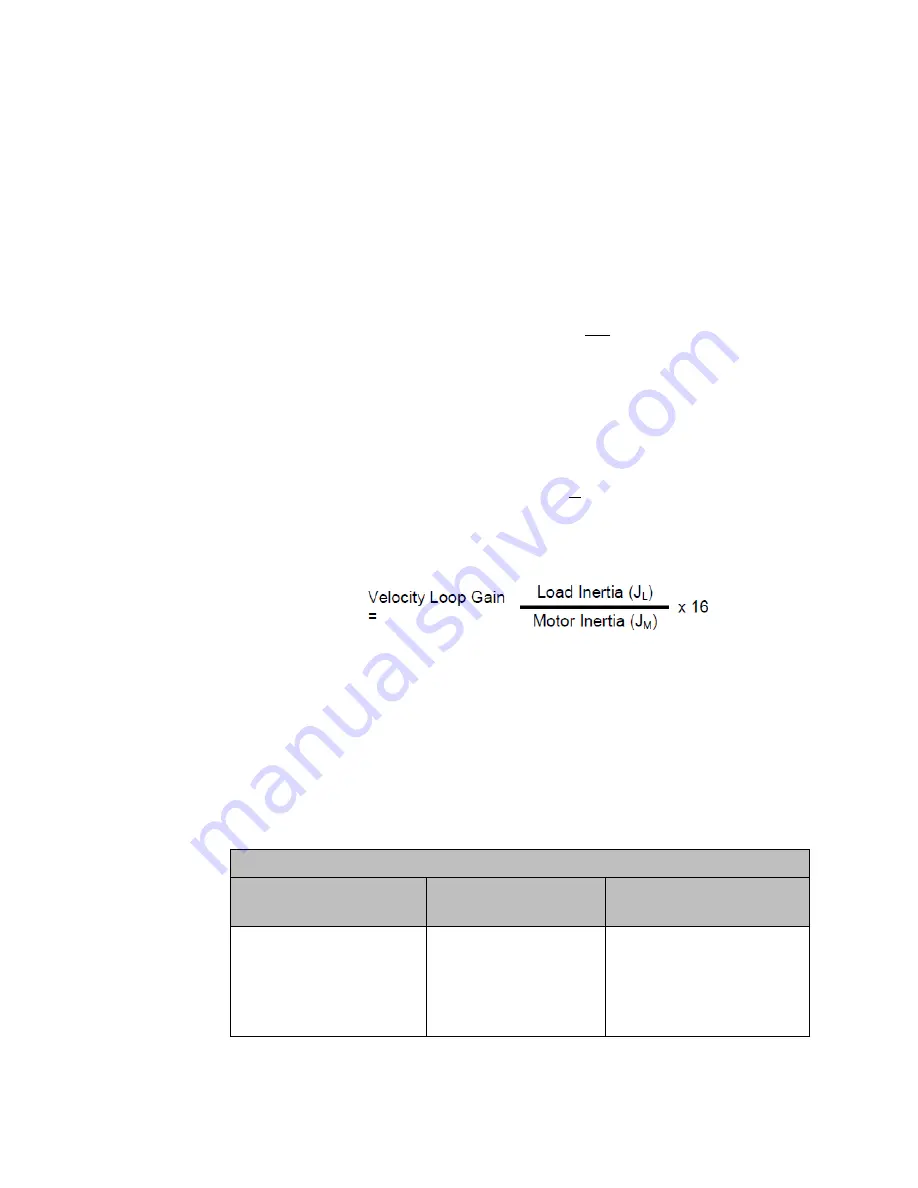
User Manual
Chapter 4
GFK-1742F
Jan 2020
Configuration
128
6.08 Acceleration Feed Forward Percentage. This configuration item is not used in the
current DSM314 firmware.
6.09 Integrator Mode Integrator Mode. Position loop position error integrator operating
mode. Off means the integrator is not used. Continuous means the integrator runs
continuously even during servo motion. Servo Null means the integrator only runs
when the Moving %I status bit is OFF. Integrator Mode should normally be set to Off.
Continuous mode may be used for Follower operation only when a constant or
slowly changing master velocity is expected. This parameter should not be used to
dampen disturbances in the position loop feedback. Never select Continuous for
point to point positioning applications. Default: OFF.
6.10 Integrator Time Constant Integrator Time Constant (milliseconds). This is the
position loop position error integrator time constant. This value indicates the time
required to reduce the position error by 63%. For example, if the Integrator Time
Constant is 1000 (1 second), the Position Error would be reduced to 37% of its initial
value after 1 second. A value of zero turns off the integrator. If used, the Integrator
Time Constant should be 5 to 10 times greater than the Position Loop Time Constant
to prevent instability and oscillation. Default: 0.
6.11 Velocity Loop Gain Used to set velocity loop gain. This applies to Digital Servos and
Analog Torque Mode Servos only. This parameter is not used for Analog Servos in
Velocity Mode. The formula
can be used to select an initial velocity loop gain value. The allowable value range is
0 to 255. The value of 0 should be used if the motor shaft is not attached to a load.
Default: 16 (load inertia equals motor inertia).
4.3.8
Computing Data Limit Variables
The data limit values for parameters MaxPosnUu, MaxVelUu, and MaxAccUu, referred to in
some of the tables in this chapter, can be calculated using the following formulas:
Table 37: Computing Data Limit Variables
Formulas for Computing Data Limit Variables
Position Limit MaxPosnUu Velocity Limit MaxVelUu Acceleration Limit
MaxAccUu
If uu:cts >= 1:1
MaxPosnUu = 536,870,912
Else (uu:cts < 1:1)
MaxPosnUu = 536,870,912 *
uu/cts
MaxVelUu = 1,000,000*
uu/cts
If uu:cts >= 1:1
MaxAccUu = 1,073,741,823
Else (uu:cts < 1:1)
MaxAccUu = 1,073,741,823*
uu/cts






























